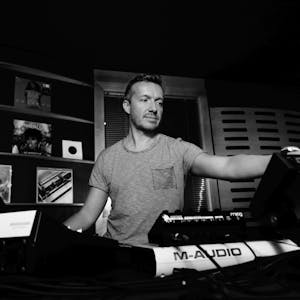The Technology of Music Production
Learn about the music production process—including recording, editing, and mixing—and the tools available to you to create contemporary music on your computer.With the recent introduction of high-quality-low-cost software and hardware, the tools of music production are now available to the masses. Albums are made in bedrooms as well as studios. On the surface this is liberating. Anyone can make an album for the low cost of a couple pieces of gear and a …
The Technology of Music Production
Learn about the music production process—including recording, editing, and mixing—and the tools available to you to create contemporary music on your computer.With the recent introduction of high-quality-low-cost software and hardware, the tools of music production are now available to the masses. Albums are made in bedrooms as well as studios. On the surface this is liberating. Anyone can make an album for the low cost of a couple pieces of gear and a software package. But, if you dig deeper, you will find that it is not so easy. Producing music requires knowledge, dedication, and creativity.
Knowledge is where this course comes in. No matter what kind of music you are making, there is a large set of tools that you will need to use. Each lesson of this course will demonstrate a different set of music production tools, loosely following along the music production process of recording, editing, and mixing.
We will start with some background on the nature of sound and how we perceive it. We will then examine the components necessary to record audio into a computer, so that you understand the devices that sound must travel through in a music production process.
Once recorded, sound must be organized along a timeline, a process known as editing. It allows us to give the impression of perfect performances and create many of the sounds we hear in contemporary music. The contemporary editing tool is the Digital Audio Workstation (DAW), a piece of software that stores and organizes all the assets of a musical project. We will focus on the editing tools that are essential in contemporary music production and that all DAWs provide.
After editing, sounds must be combined or mixed together, so we look to the mixing board—a very creative place if you know how to use it. We will explore the basic functionality of both hardware and software mixing boards, including volume, pan, mute, solo, busses, inserts, sends, and submixes. The mixing process, however, includes more tools than the mixing board provides on its own. Sound must also be processed, modified from its recorded state to fit the context of the music. We will look at compression, equalization, and delay, and examine the many audio effects that are offshoots of these devices and how they are used in a musical context.
In the end, the music production process relies on your creativity. Creativity is a product of the mind and will stay there, unexpressed, until the right tools are used in the right way to share it with the world. If you have an idea in your head, it will take numerous steps, each with an important tool, to reach your audience. You bring the dedication and creativity, and this course will bring you the knowledge to make that happen.
Discuss the nature of sound, how it travels, and its properties
Set up your Digital Audio Workstation, record audio, and utilize basic audio editing techniques such as trimming, fades, and merging
Define the different categories of effects: Dynamic Effects, Delay Effects, and Filter Effects and use them effectively in a recording project
Discuss the role filters play in music synthesis and define how they effect the input signal
Syllabus
Syllabus - What you will learn from this course
Week 1
Welcome to The Technology of Music Production
Sound and Signal Flow
Week 2
The DAW
Week 3
The Mixer
Week 4
Dynamic Effects
Week 5
Filter and Delay Effects
Week 6
Synthesis
FAQ
When will I have access to the lectures and assignments?
Access to lectures and assignments depends on your type of enrollment. If you take a course in audit mode, you will be able to see most course materials for free. To access graded assignments and to earn a Certificate, you will need to purchase the Certificate experience, during or after your audit. If you don't see the audit option:
What will I get if I subscribe to this Specialization?
When you enroll in the course, you get access to all of the courses in the Specialization, and you earn a certificate when you complete the work. Your electronic Certificate will be added to your Accomplishments page - from there, you can print your Certificate or add it to your LinkedIn profile. If you only want to read and view the course content, you can audit the course for free.
Is financial aid available?
Yes. In select learning programs, you can apply for financial aid or a scholarship if you can’t afford the enrollment fee. If fin aid or scholarship is available for your learning program selection, you’ll find a link to apply on the description page.
Reviews
A well established & detailed class about music tech its very much opened my mind to the DAW and how it can apply for my own sound design. :^J
When you overpass the barrier and fear of a field is because you have a good teacher behind.
Loudon makes the difference. He is clear and knowledgeable when he explains.
Thanks
This was an amazing course. Totally loved the way Loudon delivered it. I will definitely go back and re-do some of the material that was definitely more in-depth.
Addicted to it. Applies to a wide range (from begginers to advanced users) and the interaction with other students is great in the forums.
Start your Free Trial
Self paced
55,273 already enrolled
4.8stars Rating out of 5 (931 ratings in Coursera)
Go to the Course
